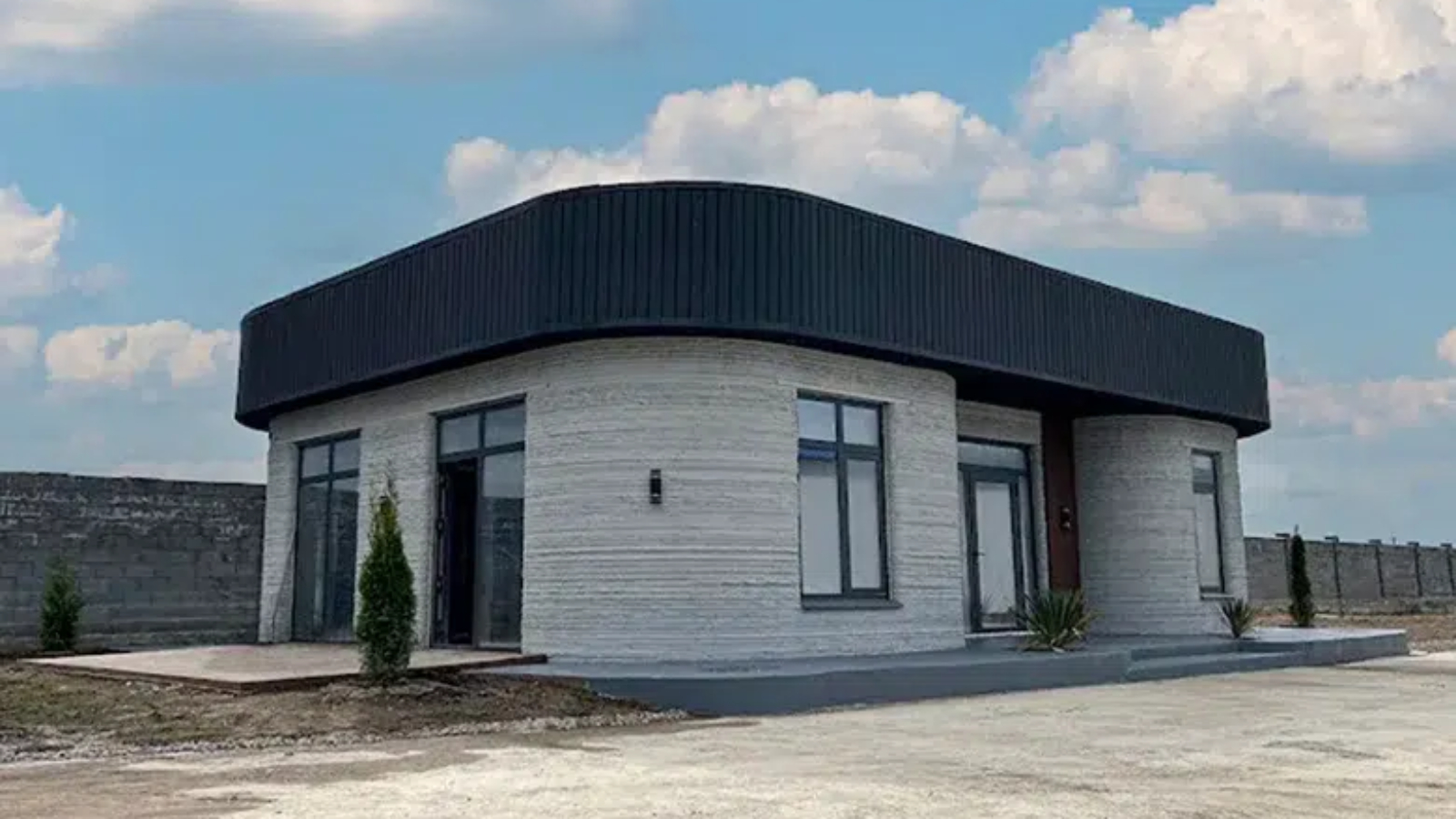BM Partners, a 3D construction printing company in Kazakhstan, has completed Central Asia’s first 3D printed house. The building, located in Almaty, the largest city of Kazakhstan, is categorized within a high-risk zone for severe seismic activity according to the Richter scale.
The building has been constructed to withstand a 7.0 magnitude earthquake – reflecting rigorous adherence to engineering principles and building codes aimed at ensuring safety and structural integrity during significant seismic events. The building spans a floor area of 100m² (1076 square feet) and incorporates construction techniques specifically designed to withstand earthquakes.
Manufacturing on Demand
The entire project was completed in less than two months – from initial printer setup to finalized interior and furnishings. The walls were 3D printed in just five days, with an additional two days dedicated to the installation of a seismic beam belt in accordance with local building codes. The reinforced concrete envelope, encircling the entire structure, is essential for enhancing the structural integrity of houses in earthquake-prone areas. The beam belt forms the characteristic upper part of the building.

To enhance the building’s structural integrity, BM Partners used a special strong concrete mix with a compression strength of almost 60 MPa (8500 PSI), substantially exceeding the 7-10 MPa (1015-1450 PSI) typical of conventional brick and stone used in Kazakhstan. This mix, comprising locally sourced cement, sand, and gravel enhanced with the D.fab admixture, a joint development of COBOD International and Cemex, allows for customized concrete formulations tailored to regional needs. Considering Kazakhstan’s extreme climate conditions – varying from minus 57 to plus 49 degrees Celsius (minus 135 to plus 120 degrees Fahrenheit) – the building incorporates expanded polystyrene concrete as insulation for the walls.
“This project once again demonstrates that 3D printed buildings are built to last, also when made in earthquake high-risk areas. We are proud to have developed the solution that enabled BM Partners to complete this project fully within just two months and using extra strong 3D printable concrete made from locally sourced materials,” said Henrik Lund-Nielsen, Founder and General Manager of COBOD International.
You might also like:
HTL constructs Ireland’s first 3D printed homes: “It’s like building a concrete block wall, but the machine lays 50mm layers instead of manual placement,” said Justin Kinsella, Managing Director and Co-founder of HTL. “As architects and engineers, we design the building digitally, and the model guides the printer to extrude the material layer by layer,” The technology accelerates construction, reduces labor needs, and is expected to complete the homes three times faster than traditional methods, with completion anticipated by October.
* This article is reprinted from 3D Printing Media Network. If you are involved in infringement, please contact us to delete it.
Author: Edward Wakefield



Leave A Comment